

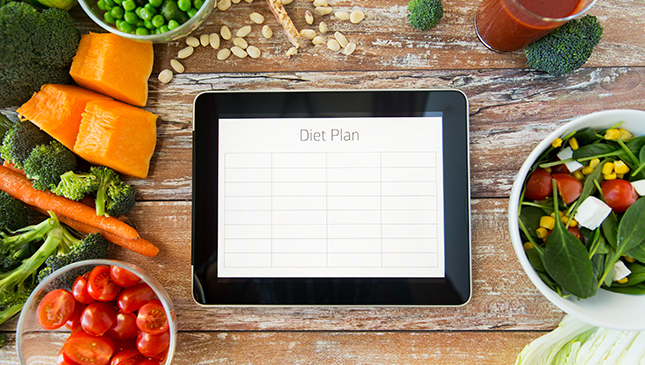
Inflammation is a normal – and much needed – bodily function. It’s the response of your immune system working to heal wounds and fight infection. The external signs of acute inflammation – local redness, heat, swelling and pain – indicate your body is increasing blood flow and bringing more inflammatory immune cells to places that need healing.
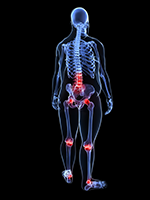
But sometimes the process can go into overdrive, constantly churning out excessive inflammatory compounds. Chronic inflammation causes the inflamed lesions associated with hidradenitis suppurativa. Ongoing inflammation is also involved in other chronic diseases including asthma, rheumatoid arthritis, Celiac disease and inflammatory bowel disease (e.g. Crohn’s disease, ulcerative colitis). Heart disease, diabetes and perhaps even Alzheimer’s disease have inflammatory components as well. Obesity also triggers the release of a cascade of inflammation that can lead to health problems.
No one food can cause inflammation, but your overall diet can contribute. A high intake of foods rich in saturated and trans fats, refined grains and added sugars can promote inflammation. Not surprisingly, many pro-inflammatory foods like fatty meats, fried fast food and sugary soft drinks are bad for our health. And many contribute to weight gain, which itself can also promote inflammation.
Conversely, components in foods such as antioxidants, omega-3 fatty acids and natural plant compounds called phytochemicals have anti-inflammatory actions in the body. The Mediterranean diet, one of the most studied diets, is considered an anti-inflammatory diet due to its abundance of nutrient- and phytochemical-rich fruits, vegetables, whole grains, nuts and olive oil.
An anti-inflammatory diet is not a “diet” in the strict sense. Rather, it’s a way of choosing foods – and limiting or avoiding others – to help quell inflammation in the body. Adopting the strategies outlined in “10 Keys to a Healthy Diet”, is the first step in eating an anti-inflammatory diet. The following tips will help you add specific foods to your diet thought to have strong anti-inflammatory properties.
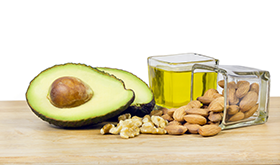
Research suggests that this type of unsaturated fat, plentiful in olive oil, almonds and avocados, reduces inflammation in the body.1-6 Foods high in monounsaturated fat also contain antioxidants and phytochemicals that may play a role in reducing inflammation. Extra virgin olive oil, for example, is a source of polyphenols, a phytochemical that have received much attention for their anti-inflammatory effects.7 (Regular and light olive oil contain little or no polyphenols due to the way they are processed.) Avocados also contain anti-inflammatory polyphenols.
Cooking oils high in monounsaturated fat include olive oil, canola oil, peanut oil, sunflower oil and sesame oil. Other good sources include avocado, almonds, almond butter, cashews, pecans, peanuts, peanut butter and pistachios.
Tips to add monounsaturated fat
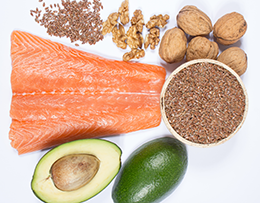
Omega-3 fatty acids include DHA (docosahexaenoic acid) and EPA (eicosapentaenoic acid) found in oily fish oil and ALA (alpha linolenic acid) found in flax oil, flaxseeds, chai seeds, hemp seeds, walnuts, walnut oil and canola oil.
Studies have found that increasing intakes of omega-3 fats lead to less inflammation in the body.8-11
Tips to increase omega-3’s
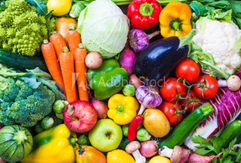
Flavonoids are a large family of phytochemicals with anti-inflammatory effects.12-14 They’re found in fruits, vegetables, nuts, beans and lentils, cocoa, tea and red wine and are thought to be responsible, in part, for the health benefits of plant-based diets. The following foods and beverages are excellent sources of anti-inflammatory flavonoids.
| Fruits | Vegetables | Legumes/Nuts | Beverages |
| Apples | Broccoli | Black beans | Black tea |
| Blueberries | Celery | Chickpeas | Green tea |
| Blackberries | Cherry tomatoes | Kidney beans | Oolong tea |
| Cranberries | Garlic | Navy beans | White tea |
| Grapefruit | Green peppers | Pinto beans | Herbal tea |
| Lemons | Hot peppers | Lentils | |
| Limes | Kale | Soybeans | Red wine |
| Oranges, tangerines | Onions | Tofu | |
| Raspberries | Parsley | Mixed nuts | Other |
| Red grapes | Spinach | Walnuts |
Dark chocolate |
| Strawberries | Thyme |
Tips to increase flavonoids
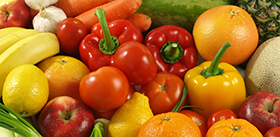
Many fruits and vegetables owe their yellow, orange and red colours to carotenoids, a group of phytochemicals. The most common carotenoids in our diet are α-carotene, β-carotene, β-cryptoxanthin, lutein, zeaxanthin, and lycopene. Beta-carotene, the best-known carotenoid found in carrots and sweet potato, has been shown to dampen inflammation in test tube and animal studies. So has lycopene, a carotenoid plentiful in tomato juice.15-17
The anti-inflammatory effects of carotenoids have also been observed in people. Consumption of carotenoid-rich foods and drinking tomato juice have both been shown to reduce blood markers of inflammation in healthy adults.18-20
The following fruits and vegetables are excellent sources of anti-inflammatory carotenoids.
| Fruits | Vegetables | |
| Apricots | Broccoli | Summer squash |
| Cantaloupe | Brussels sprouts | Sweet potato |
| Mango | Carrots, carrot juice | Sweet red peppers |
| Papaya | Collard greens | Tomatoes, canned |
| Peaches | Dandelion greens | Tomato juice |
| Oranges | Kale | Tomato sauce |
| Nectarines | Mustard greens | Turnip greens |
| Pink/red grapefruit | Peas (green) | Winter squash |
| Tangerines | Pumpkin | Vegetable cocktail |
| Watermelon | Spinach |
Tips to increase anti-inflammatory carotenoids
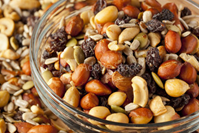
Studies point to a protective role of nuts against inflammation. People who eat nuts and seeds frequently – versus rarely or not at all – have lower levels of inflammation.21-23 Nuts contain a number of anti-inflammatory compounds including magnesium, omega-3 fatty acids (only walnuts), an amino acid called arginine and dietary fibre.
While all types of nuts are healthy, they are high in calories and easy to overeat. To prevent weight gain, substitute nuts for an equal number of calories from refined (white) starchy foods such as bread, crackers and rice. One serving of nuts is equivalent to 28 grams (1 ounce).
Per 1 ounce (28 grams) serving |
|||
| How many? | Calories | ||
| Almonds | 24 | 160 | |
| Brazil nuts | 6 to 8 | 190 | |
| Cashews | 18 | 160 | |
| Hazelnuts | 20 | 180 | |
| Macadamia nuts | 10 to 12 | 200 | |
| Peanuts | 28 | 170 | |
| Pecans | 20 halves | 200 | |
| Pine nuts | 157 | 190 | |
| Pistachios | 49 | 160 | |
| Walnuts | 14 halves | 190 | |
When buying nuts, read labels. Look for raw or dry roasted nuts and buy them unsalted.
Tips to add nuts to your diet
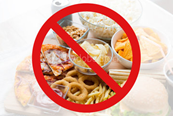
Ultimately, the carbohydrate-rich foods you eat – a bagel, granola bar, pasta, apple, yogurt or candy – end up in your bloodstream as glucose, the body’s primary source of energy. But not all carbohydrates raise your blood glucose in the same way. Some are digested and absorbed into the bloodstream quickly, others more slowly. The speed at which glucose enters your bloodstream can stimulate inflammation.
The glycemic index (GI) is used to indicate how much a food raises blood glucose levels. High GI foods (e.g. white bread, white rice, soda crackers, refined breakfast cereals, instant oats, baked Russet potatoes, mashed potato, raisins, watermelon, table sugar, sugary drinks) are rapidly digested and cause marked fluctuations in blood sugar levels.
In response to a fast and large spike in blood glucose, the pancreas releases a large amount of insulin, a hormone that removes glucose from the bloodstream. A diet based on high GI foods that causes elevated blood glucose and insulin has been shown to cause and worsen inflammation.24-25
Low GI foods (e.g. 100% stoneground bread, steel-cut oats, 100% bran cereal, brown rice, quinoa, white and whole wheat pasta, sweet potatoes, apples, bananas, berries, oranges, legumes, yogurt, milk) are slowly digested and absorbed and produce gradual rises in blood sugar and insulin. Among overweight individuals, a low glycemic calorie-reduced diet has been shown to reduce inflammation.26
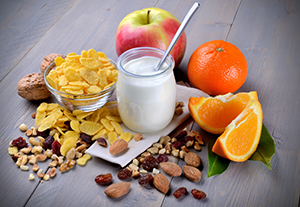 Tips to reduce the glycemic load of your diet
Tips to reduce the glycemic load of your diet
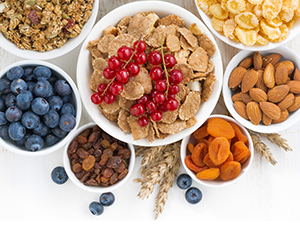
A number of studies have linked a high fibre diet to lower levels of inflammation in the body.27-30 Fibre-rich foods might thwart inflammation in a few different ways. In the gut, fibre may absorb and eliminate inflammatory compounds. Fibre-rich foods contain phytochemicals, such as flavonoids, which dull inflammation.
A high fibre diet also helps maintain a healthy balance of microbes in the gut. An imbalanced gut microbiota – the microbe population living in our intestine – is thought to drive inflammation.
Whole grains, fruits, vegetables, legumes and nuts contain two types of fibre, soluble and insoluble. Dried peas, beans, lentils, oats, barley, psyllium husks, apples and citrus fruits are good sources of soluble fibre. Soluble fibre helps to lower blood cholesterol and prevent large rises in blood sugar. Wheat bran, whole grains, nuts and vegetables contain mainly insoluble fibre, the type that is especially effective at promoting regularity.
Women aged 19 to 50 need 25 grams of fibre each day; men require 38 grams. As we get older and our calorie requirements decrease, we need less fibre. After 50, women should aim for 21 grams, men 30 grams.
Tips to increase fibre intake
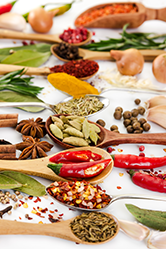
The benefit of flavouring meals with herbs and spices instead of salt goes beyond reducing sodium. Certain herbs and spices have been shown to curb inflammation in the body likely due to the presence of polyphenols, phytochemicals with anti-inflammatory properties.
Anti-inflammatory herbs and spices include basil, rosemary, cayenne pepper, ginger and turmeric. The active ingredients in herbs and spices degrade over time. Be sure to store dried herbs and spices in airtight containers away from heat and direct sunlight.
Tips to flavour with anti-inflammatory herbs and spices
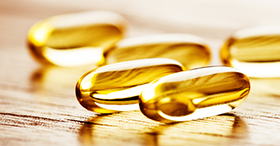
Among its many roles, vitamin D has anti-inflammatory effects in the body. Animal research has shown that vitamin D deficiency is associated with higher levels of inflammation.31-33 In people, vitamin D deficiency has been linked to a number of inflammatory diseases, including rheumatoid arthritis, inflammatory bowel disease and type 1 diabetes. It’s thought that vitamin D deficiency may even increase levels of inflammatory markers in healthy people.
A major source of vitamin D is sunlight; your skin produces it when exposed to ultraviolet B rays. Very few foods have vitamin D naturally. Salmon and tuna are among the best sources. Eggs and cheese provide a little. Besides fortified milk and non-dairy beverages, some brands of orange juice, yogurt and breakfast cereals may also have added vitamin D.
Current vitamin D recommendations for North Americans range from 600 to 2000 IU per day. In the fall and winter, when the sun isn’t strong enough to produce vitamin D in the skin, people who live in northern latitudes are advised to supplement with 1000 to 2000 IU vitamin D per day.
Taking more vitamin D than required is not better. Safe upper daily limits are 2500 IU (aged 1-3), 3000 (aged 4-8) and 4000 IU (aged 9 and older). Excess vitamin D can cause nausea, vomiting, poor appetite, weakness, heart rhythm problems and kidney damage.
It’s well established that carrying extra fat, especially around the middle, contributes to inflammation in the body. An elevated waist circumference is a proxy for visceral fat, deep abdominal fat that packs itself around the organs and pumps out inflammatory immune chemicals.
If you are overweight, the best formula for losing weight is a combination of diet and exercise. You will find more detailed tips in our Weight Management Centre.
If you are having difficulty controlling your weight, consult a Registered Dietitian who can design an eating plan that suits your lifestyle, your food preferences and your health concerns.